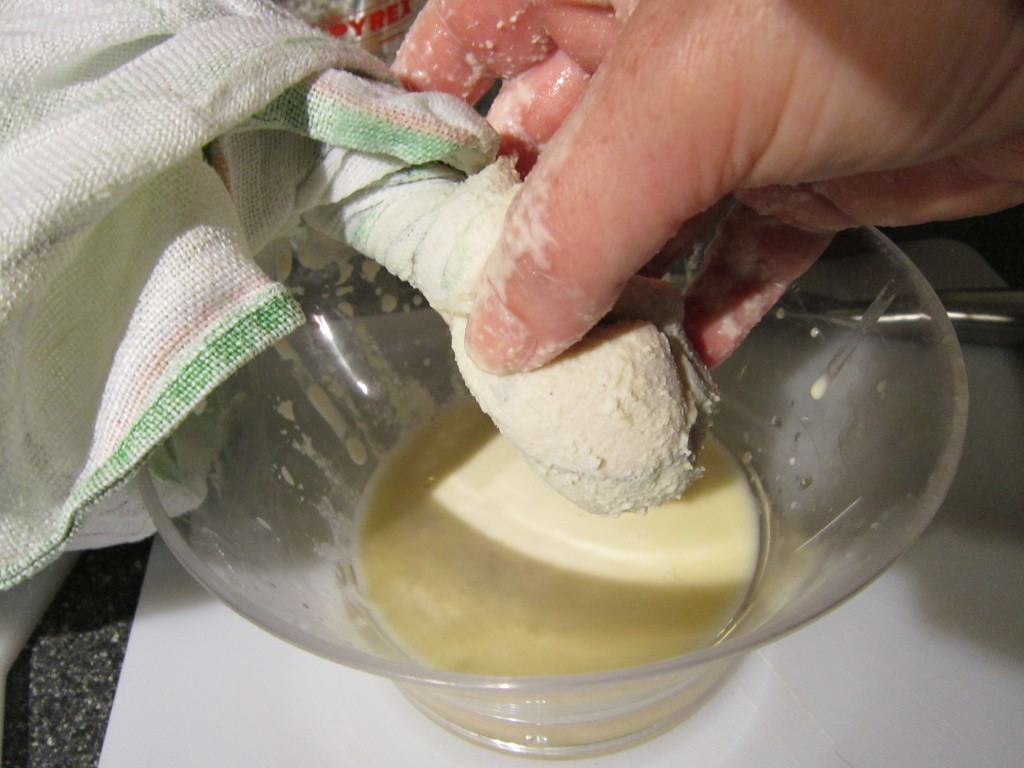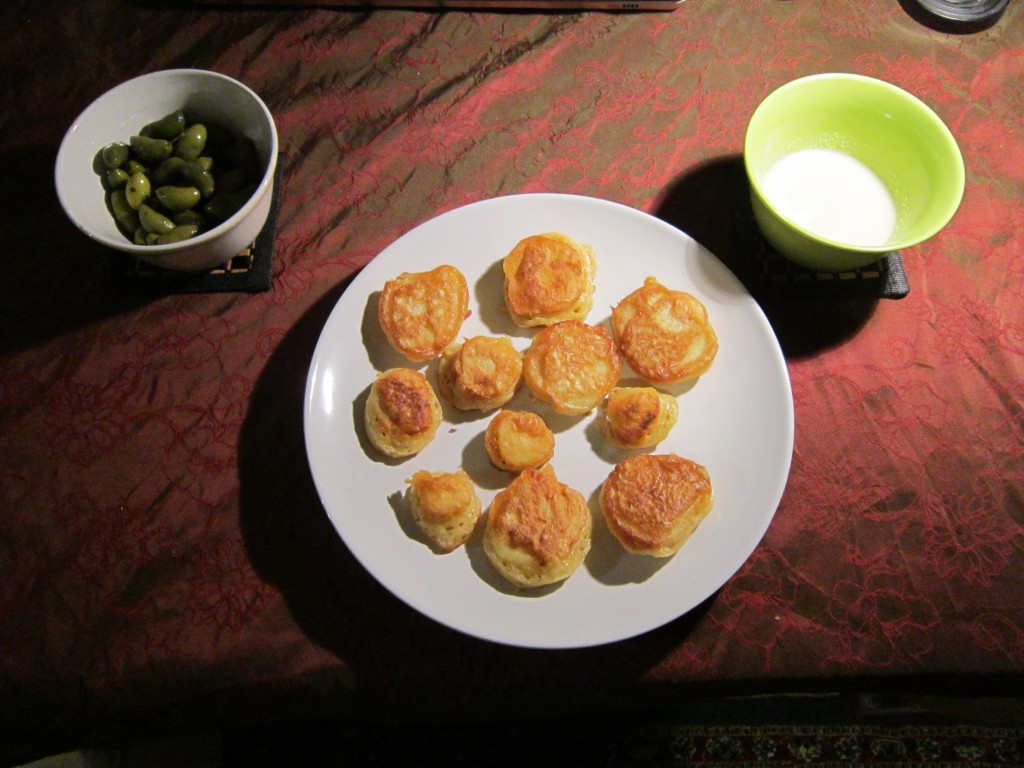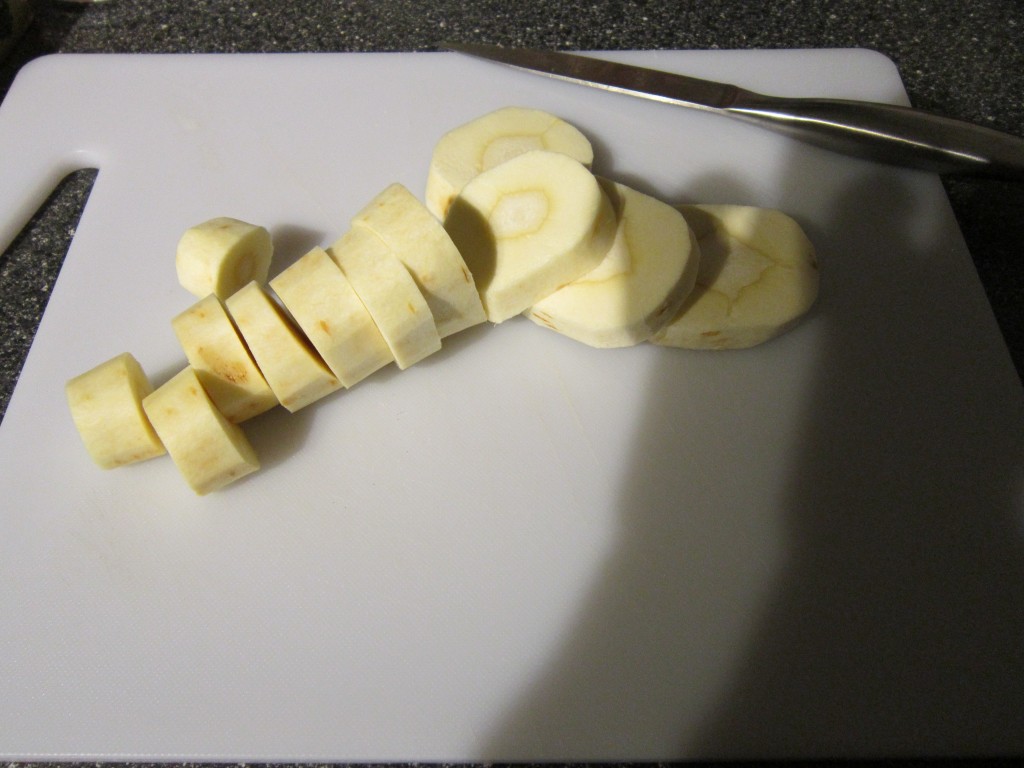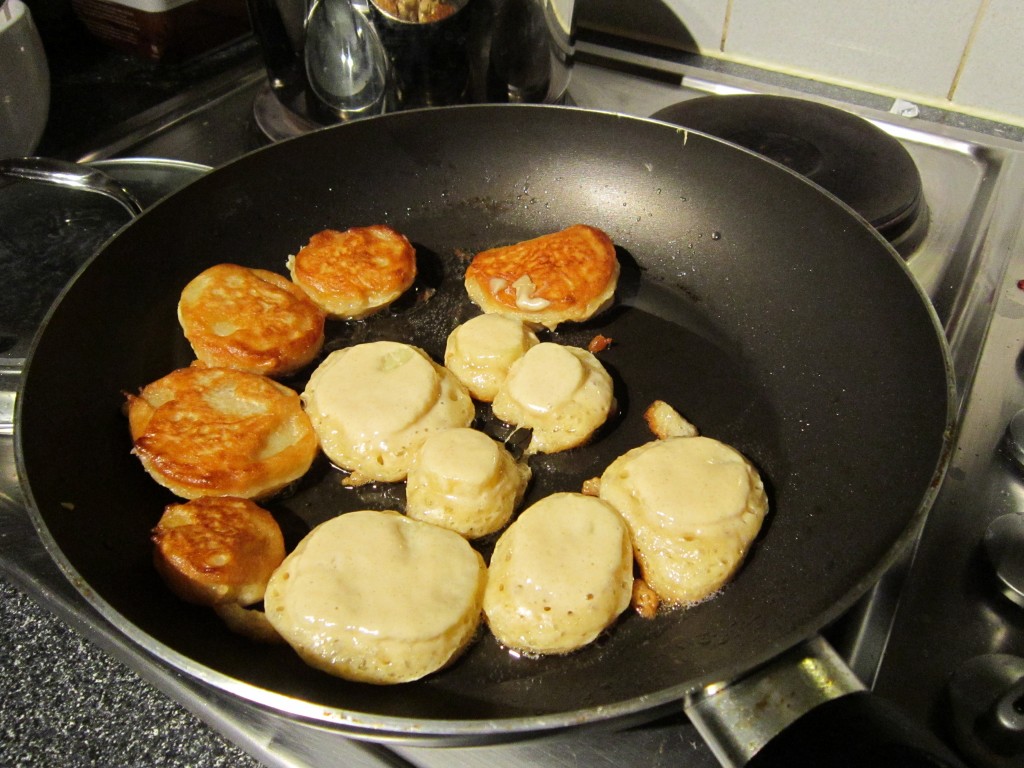So I tried my hand at a little medieval cookery. More specifically, I wanted to do a medieval feast, but it seemed wilful madness to attempt to cook the whole gamut of an ancient meal full of unfamiliar recipes, and then expect people to eat the results of the experiment. I mean, I know that if there is a total systemic failure, Domino’s is only a phone call away… but still. In the end it seemed smartest to do it in occasional stages.
The first thing I tried was an hors d’oeuvre/supper dish, “frytour of Pasternakes, of Skirwittes, & of Apples”. This basically translates as carrot, parsnip, and apple fritters, served with an almond milk and saffron sauce.
The recipe I used is taken from Pleyn Delit: Medieval Cookery for Modern Cooks by Hieatt, Butler, and Hosington. This particular recipe is a translation from one of the same name in The Forme of Cury. It’s a famous medieval cookbook compiled by the “Chief Master Cooks of King Richard II” and committed to vellum around 1390.
“Frytour of pasternakes, of skirwittes, & of apples. Take skyrwittes and pasternakes and apples, & perboile hem. Make a batour of flour and ayren; cast þerto ale & yest, safroun & salt. Wete hem in þe batour and frye hem in oile or in grece; do þerto almaund mylke, & serue it forth.
The recipe implies that you can use all fruits and vegetables and cook them together, but I decided to start small and begin with parsnips. Later, I tried it with apples.
The ingredients are as follows (the measurements Hieatt and Butler give are in US cups, I’ve converted them to metric here):
- Almond milk (optional – see below)
- 10 saffron threads soaked in a very little boiling water (optional)
- 2 – 4 parsnips (or the same amount of carrots, or 4 – 6 apples)
- 1 packet of yeast
- 155ml (2/3 cup) lukewarm ale or beer plus another 60ml (¼ cup) to dissolve the yeast in
- 2 eggs, beaten
- Additional saffron to colour the batter (optional – Hieatt and Butler omit this in the modern recipe, but it is present in the medieval one)
- ½ tsp salt
- Oil for cooking (if you want to go full medieval, this can be butter or lard or dripping)
The first step is to make the sauce, if you decide to have it. To be honest, the sauce was quite bland and much more and messier work than making the fritters, so you can comfortably skip it. But in the interests of completeness, and because I did it, dammit, I’m including the instructions.
Almond Milk
Almond milk turns up a lot in medieval cookery, and it’s a direct consequence of the fact that dairy products were forbidden during Lent. I’ve baked using ground almonds instead of flour, and that’s always been fabulous, but I’ve never used it as a liquid before.
If you are having the fritters with the recommended sauce – a thin almond milk affair coloured and flavoured with saffron – and unless you’ve managed to pick up a carton of that new almond milk for the dairy intolerant (I certainly didn’t see it at my local Sainsburys today, and odds-on it’s pre-sweetened anyway) you’re going to have to make almond milk from scratch. Lucky you.
To do this you’ll need the following:
- 60g (2 oz) of ground almonds
- 120ml (½ cup) of boiling water
- Clean cheesecloth or muslin
To make the sauce:
- Put the ground almonds in a jug or bowl and pour the boiling water on to them.
- Give it a stir, and then leave it to thicken. How long is up to you, but probably at least an hour and the longer the better – ideally overnight.
- When you are ready for the milk (I did this while the batter was left to rise), set up a jug or bowl and drape the cheesecloth over it (I used a thin tea towel).
- Pour the almond mixture into the centre of the cheesecloth and gently wring the liquid out of it into the jug. Try to get as much liquid out as you can without forcing the almondy bits through the cloth. You can keep the almondy bits to reuse for another pass at a second, thinner almond milk, if you wish.

You can now flavour and colour the milk with a little saffron. Put the strands in a tea cup, pour a tiny amount of hot water on them, and then swirl them about and leave them for five to ten minutes. Then chuck the lot into the milk and stir.
One thing I found with the sauce is that it is extremely bland – I added a sprinking of salt and white pepper (the medieval pepper of choice) to raise its profile a bit.
Making the Fritters
To make the fritters:
- Dissolve the yeast into 60ml of lukewarm ale or beer in jug (I used pale ale I warmed slightly by pouring into a pan and leaving it on cooling hob on the stove – removing it when it was blood warm). Mix the flour and salt into a large bowl.
- Pour the yeast mixture and the rest of the ale into the flour mix and stir with a wooden spoon.
- Add the beaten eggs, stirring them in, but not too much – just enough so that all the ingredients are thoroughly combined.
- Now cover the bowl with a tea towel or pierced cling film and put it somewhere warm and draft-free to rise for an hour, or until it roughly doubles in volume.
- While this is happening, get on with your fruit/vegetables. Put a pan of salted water on to boil.
- Wash, peel, and slice your parsnips or carrots into round chunks about ½ inch wide (if using apples, peel and core them and do the same, so they come out as rings).
- Pop them into the boiling water, and boil the parsnips for ten minutes, the apples for about six. You will not be frying them for long, so you want them with a slight bite but not too much.
- Drain the fruit/veg in a colander and let cool.
- When the batter is risen, put a frying pan on for a medium high heat and add oil. Be generous, it is a fritter after all and there’s no point pretending it’s health food – or you could deep-fry them if you have the kit.
- Drop the slightly cooled veg/fruit into the batter and stir to coat all the pieces generously. With your fingers, fish each piece out and drop it carefully into the frying pan, so the oil doesn’t spit at you. Let each piece get golden on one side before turning it over. The fritters should puff up around the filling.
- When both sides are done, take them out and drain them on a paper towel before serving with the sauce, along with the medieval staples of bread, butter, radishes and olives. Pour the rest of the ale into a glass and drink with it.
- Feel exponentially fatter.
Was it nice?
The parsnip fritters were easy to make and looked lovely, though for a modern palate, quite bland and required a lot of seasoning. I suspect, subconsciously, that I’m expecting fried foods to be a lot saltier and sweeter. I kept thinking that these would be awesome with a sweet chili sauce. There’s a real statement there about how our tastes have changed without us knowing it.
That said, the batter really came into its own with the apples – there was something about the beery, sour batter and the sweetness of the apples that just hit the spot. Yum. Sadly, I didn’t take any pictures of the apple ones because I was too busy eating them. That’s really all you need to know.



